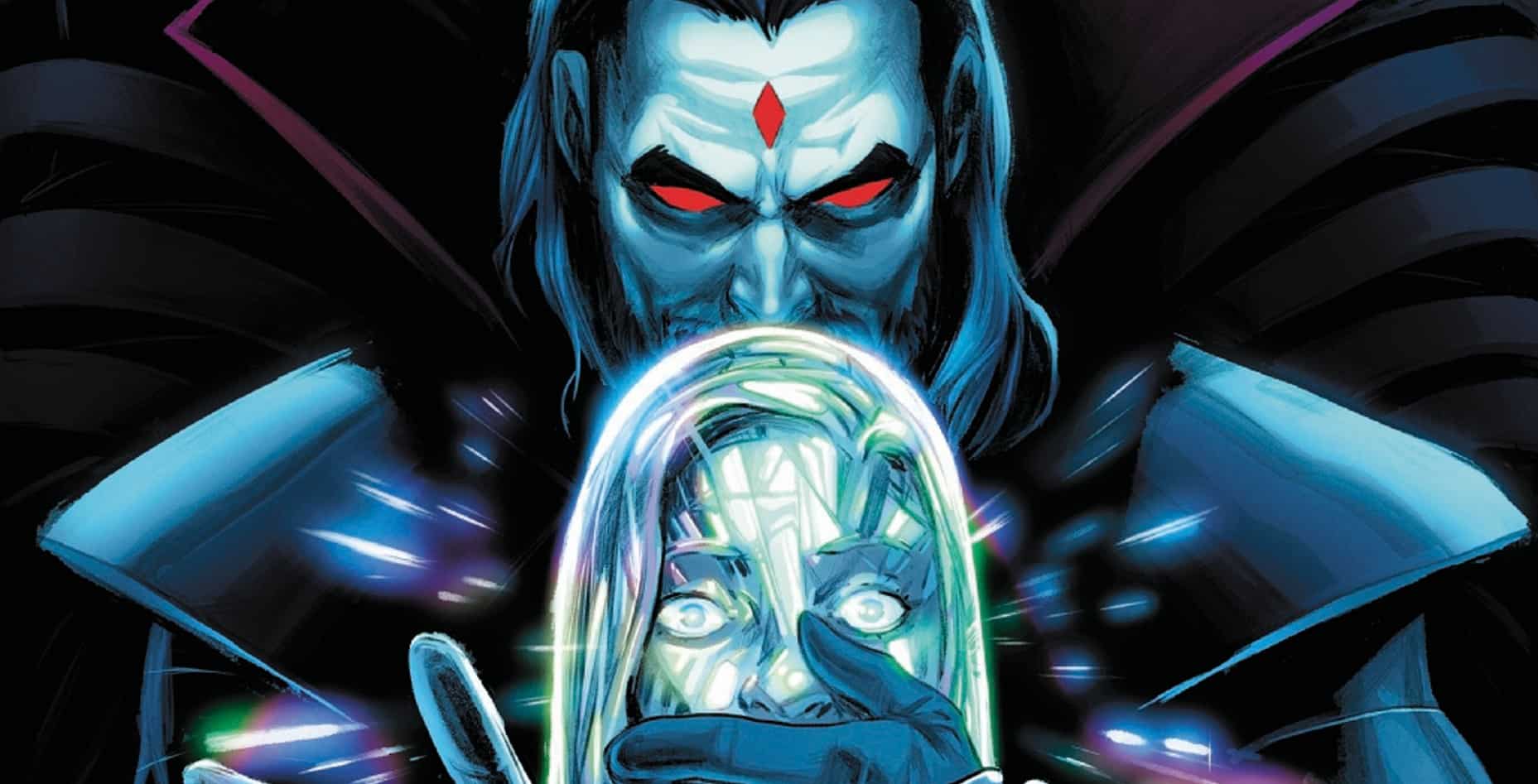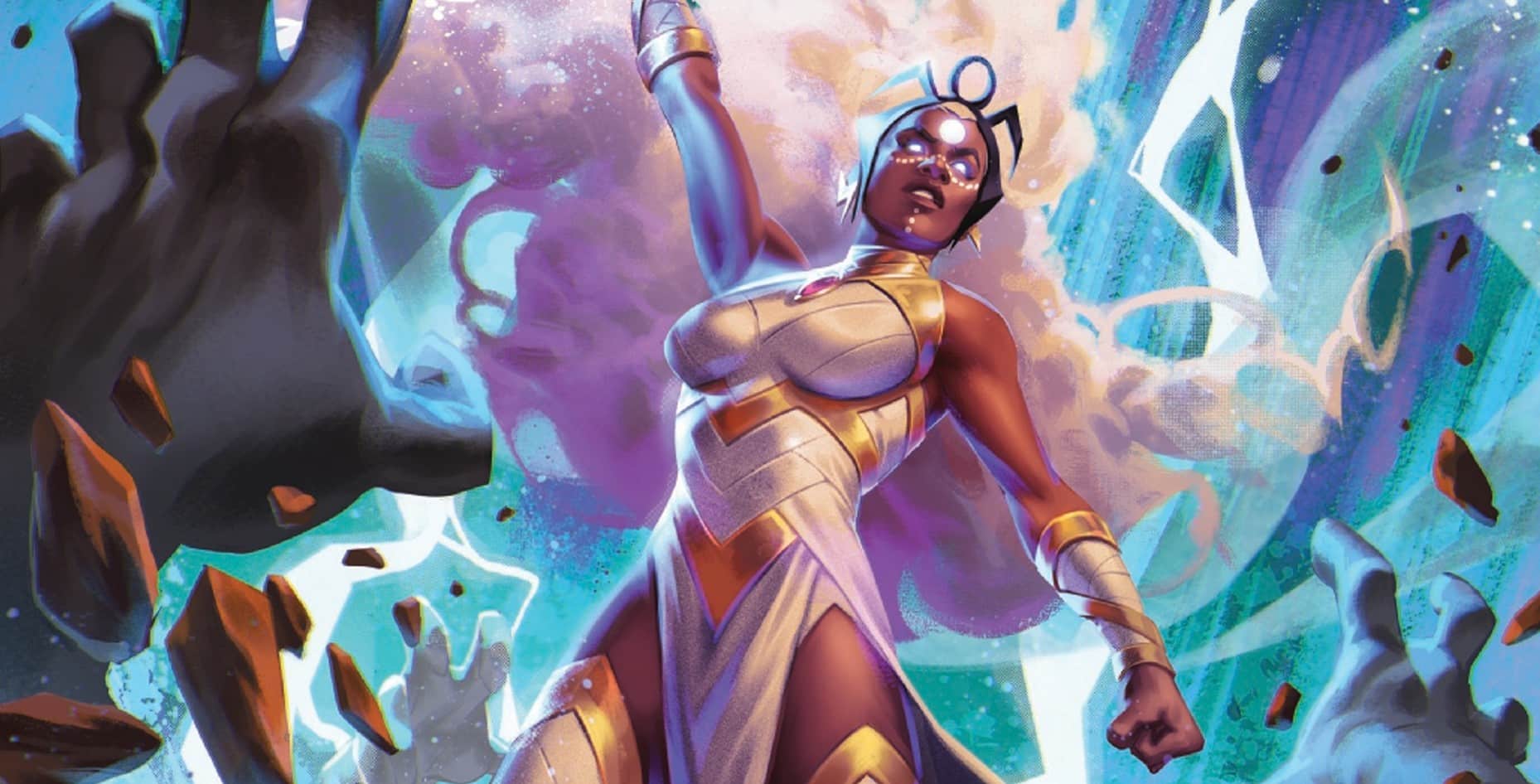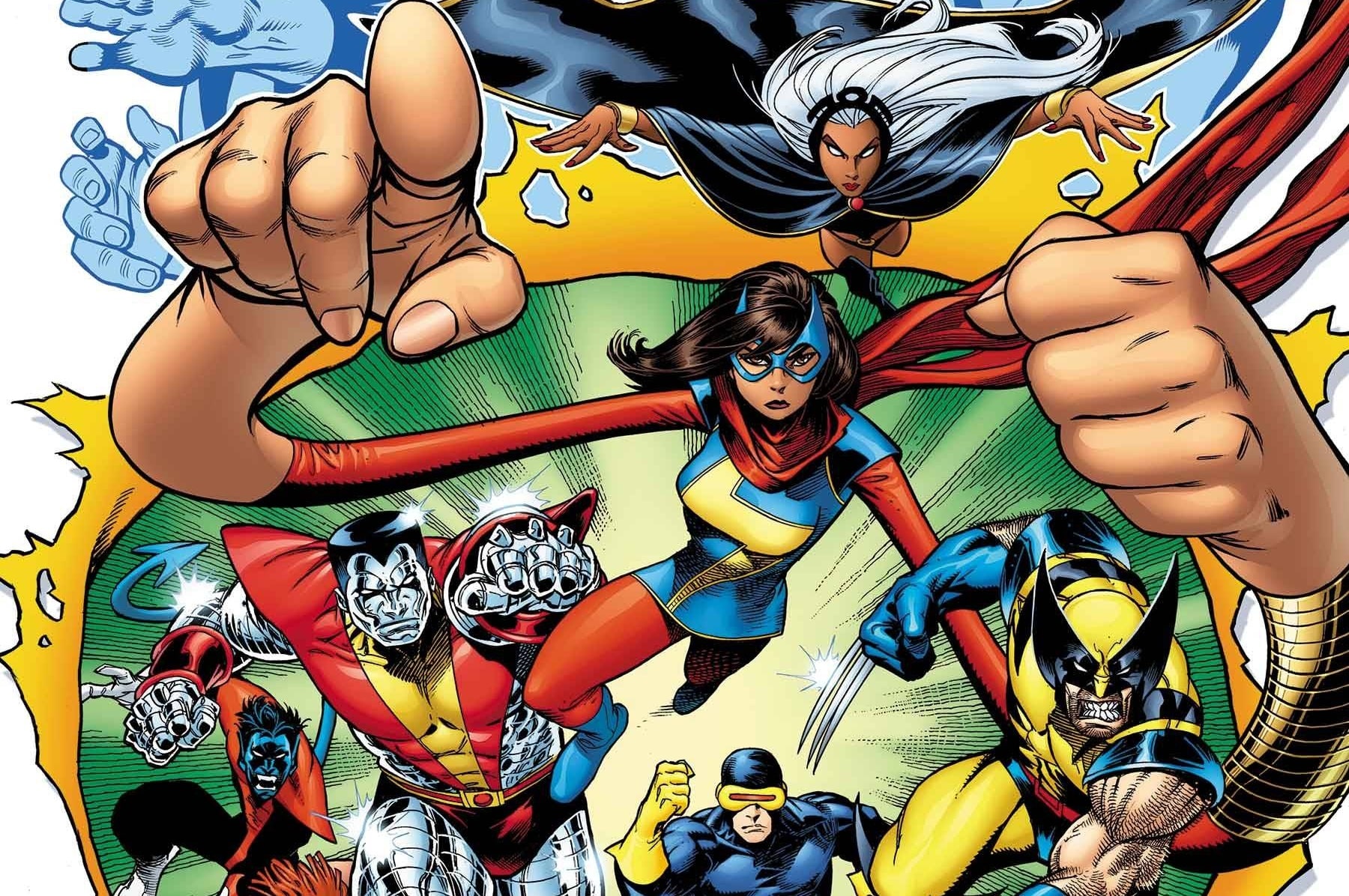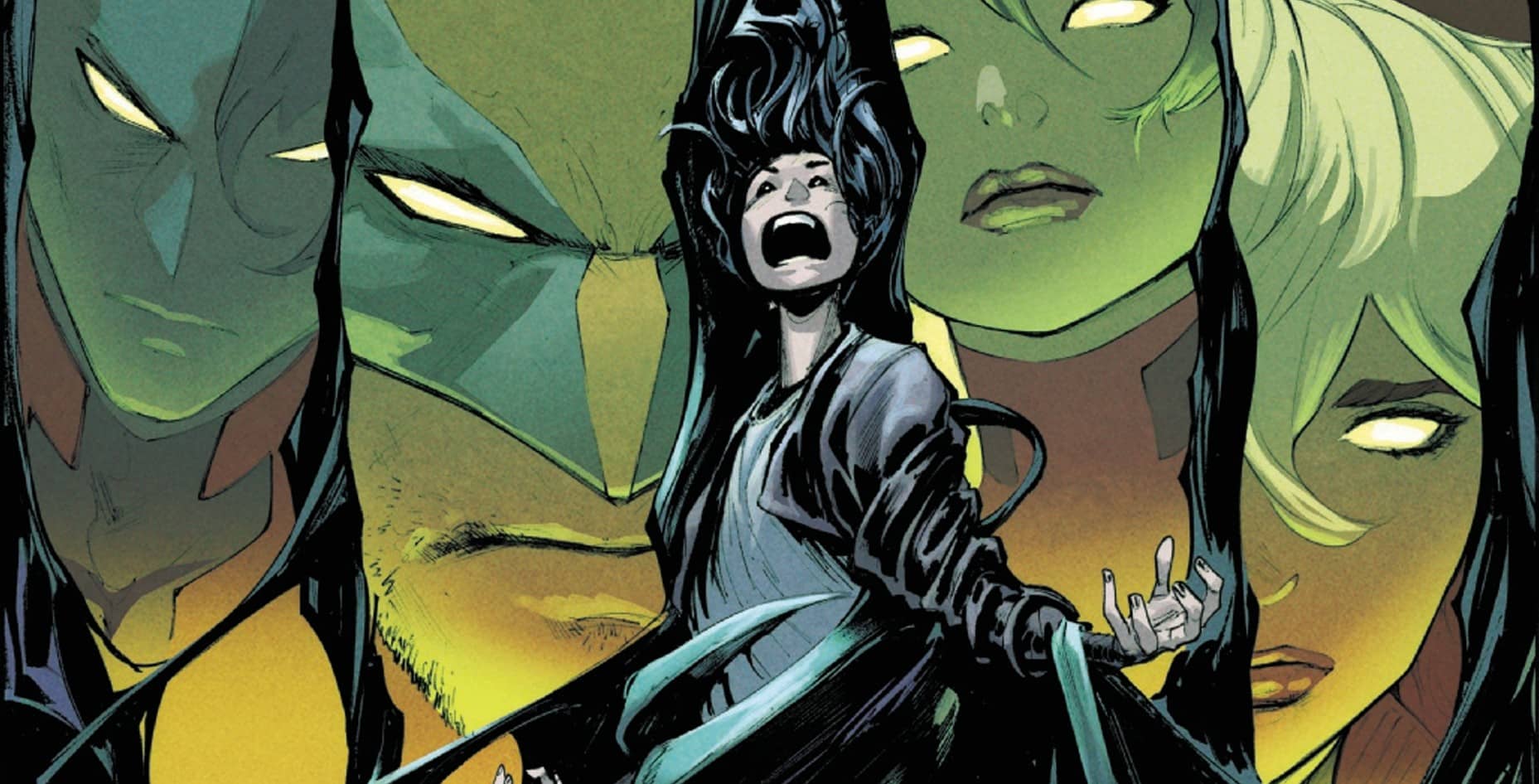Before she became a mainstay of the X-Men, Emma Frost had another role: White Queen of the Hellfire Club. As she grapples for power with the rest of the Inner Circle, witness Emma’s ruthless ascent to the top. And when she discovers there is a mole within the Hellfire Club leaking secrets to their sworn enemies, Emma will stop at nothing to uncover the truth. Emma Frost: The White Queen #1 is written by Amy Chu, drawn by Andrea Di Vito, colored by Antonio Fabela and lettered by Ariana Maher.
When I first started buying a lot of weekly Marvel comics circa 2007, the House of Ideas was publishing exactly two solo series starring women: She-Hulk and Ms. Marvel (the Carol Danvers one). While I was hungry for stories starring female superheroes and have since read both series in their entirety, back in 2007, I never considered buying either book. The main reason was the covers, many of which were drawn by Greg Horn.


I remember going to the comic book store and seeing the Horn covers on the stands. I’d look at Carol Danvers and Jen Walters striking a variety of pinup poses that often disregarded the content of the story, their stiff bodies awkwardly contorted to display as much ass and boobage as possible, their skin as shiny and plastic as their revealing latex costumes. I wasn’t offended by these covers, which weren’t materially different from the ubiquitous softcore images that contemporaneously graced the covers of magazines like FHM, Stuff and Maxim. But I knew, based on their covers, that these comics were aimed at the same audience as those magazines: a certain kind of man who’s interested in looking at a certain kind of woman in a certain kind of way. Meaning they weren’t for me. And so I turned away and spent my time and money elsewhere, on versions of sexiness that better suited my tastes.
A couple of years before his gigs on Ms. Marvel and She-Hulk, Horn provided covers for all 18 issues of the first Emma Frost solo series. Presumably, the popularity of the Emma Frost covers informed Horn becoming the go-to cover guy for Marvel’s female-led solo books. In fact, there was an approximately three-year period where Horn was responsible for over 50% of the covers of all of Marvel’s solo series starring female superheroes. This means that over 50% of all of Marvel’s solo series starring female superheroes were being marketed to the same audience that bought Maxim. No judgment — straight guys horny for drawings of latex ladies who like to perch improbably on fence posts and stools and press their cleavage against rain-soaked windowpanes with bee-stung lips vacantly pouting deserve to have their needs met. I’m simply stating a fact about the way Marvel was choosing to market their female characters.

The latest Emma Frost solo series, her first since the glory days of Greg Horn, stylistically references the logo of the previous one. This suggests a lineage between the two, which is further evoked by the pinup covers of regular cover artist David Nakayama. While I don’t like the art of Horn, I often enjoy Nakayama’s pinups. But compared to Nakayama’s previous covers featuring Emma, which are similarly meant to be sexy (because Emma Frost emphatically should be), I find the cover of Emma Frost: The White Queen #1 notably generic and lifeless. While there’s fun to be had with the sumptuous curve of Emma’s bare thigh, whose weightiness is lovingly worshipped by a carefully chosen pose and angle, her smile is more vacuous than vicious, her gaze more glassy than glamorous. The rendering of the vintage costume, which was already self-consciously vintage when it debuted in 1980, doesn’t help. This isn’t a Victorian corset, and these thigh-high boots and opera gloves are definitely plastic instead of leather. Especially because I know the real White Queen would never be tacky enough to pair a wine-red lip with a smokey eye, the overall impression does less to conjure the complex character of Emma Frost than a Spirit Halloween knockoff, innocent of context or personality.
I wish I could say kinder things about the book behind the cover. When this comic was announced, I was excited to see what this creative team would bring to this character, who’s so rarely been written by women. But the incongruity of this issue’s story, interior artwork and cover are exactly what got me thinking too much about the cover, then thinking too much again about that cover’s place in history.

In this comic, Emma Frost is supposed to be sexy. We know this because she’s Emma Frost, and because she’s wearing the same vintage costume she wears on Nakayama’s pinup cover, albeit rendered a nudge more naturalistically by Andrea Di Vito and colorist Antonio Fabela. Emma is wearing this costume because it’s the past, specifically, according to an editor’s note, “sometime after the events of X-Men #138,” though this story isn’t, to this point, strongly invested in continuity. No one else in this comic is depicted particularly sexily. There’s a party, but all the other guests are wearing normal cocktail dresses, gowns and business suits. Even Tessa, aka Sage, then undercover as the right-hand woman of Sebastian Shaw, dons a pantsuit instead of the Black Queen attire we see her wearing in other comics set during this era, like Classic X-Men #7 (1986). And there’s nothing about the plot or dialogue that’s especially sexy. If this comic is sexy, it’s simply because its protagonist seems to be contractually obligated to wear a specific sexy costume she abandoned decades ago in favor of more modern and diversely sexy styles, regardless of whether that costume makes any sense in conversation with the story being told.
Which brings me back to Nakayama’s cover and the Greg Horn-iness of it all. I am firmly in favor of sexy comics. I’m less in favor of generic sexiness, like when more than 50% of a publisher’s comics starring female superheroes reflect exactly the same kind of sexiness for the same presumed subset of cis, straight men, and contemporary comics that attempt to pay tribute to that generic sexiness. I’m also tired of aimless sexiness, like when folks assume a woman is sexy simply because she’s standing around in her underwear. Emma Frost isn’t a sexy costume. Emma Frost is a sexy character. For different reasons, and in different ways, Horn, Nakayama, Chu and Di Vito strike me as neglecting the unique character of Emma’s sexiness. In doing so, they neglect her agency, which is one of my perennial pet peeves. Agentic sexiness is different from objectified sexiness. Like the difference between a dick and a dildo. Or ordering in and eating out.
But the biggest issue I have with all the comics and covers I’ve talked about here is the muddy marketing of it all. At the start of this piece, I talked about how certain covers once made me sure certain comics weren’t for me. I’ve since learned that Horn’s obsessively objectified covers of Emma Frost, Ms. Marvel and She-Hulk were sometimes at odds with the more character-driven stories being told by the comics’ writers and interior artists. Similarly, Nakayama’s cover of Emma Frost: The White Queen #1 seems to be at odds with Chu’s story, which seems to be at odds with Emma’s sexy costume, which seems to be at odds with the physical setting Di Vito draws.
The enduring message is disappointing indecision about the marketability of this character, with editors, cover artists, writers and interior artists each throwing different things at the wall hoping something will stick. This strategy smacks of desperation rather than confidence and seems designed to fail, since regardless of what you want from a character like Emma Frost, no one is really getting a satisfying amount of anything. Yet I’m even more disappointed by the one thing the Powers That Be seem dreadfully sure of, whether it’s 2007 or 2025: that to sell a solo series starring a female superhero, even one as popular and powerful as Emma Frost, you need a very generically sexy cover.
I know I’m not nostalgic for the Greg Horn era, but I guess someone is. Time will tell whether it’s enough someones to sustain significant sales for Emma Frost: The White Queen.
Buy Emma Frost: The White Queen #1 here. (Disclaimer: As an Amazon Associate, ComicsXF may earn from qualifying purchases.)

Anna Peppard
Anna is a Ph.D.-haver who writes and talks a lot about representations of gender and sexuality in pop culture, for academic books and journals and places like Shelfdust, The Middle Spaces and The Walrus. She’s the editor of the award-winning anthology Supersex: Sexuality, Fantasy, and the Superhero and co-hosted the podcasts Three Panel Contrast and Oh Gosh, Oh Golly, Oh Wow! Follow her @annapeppard.bsky.social.





